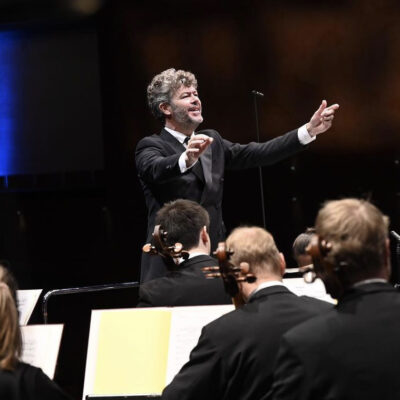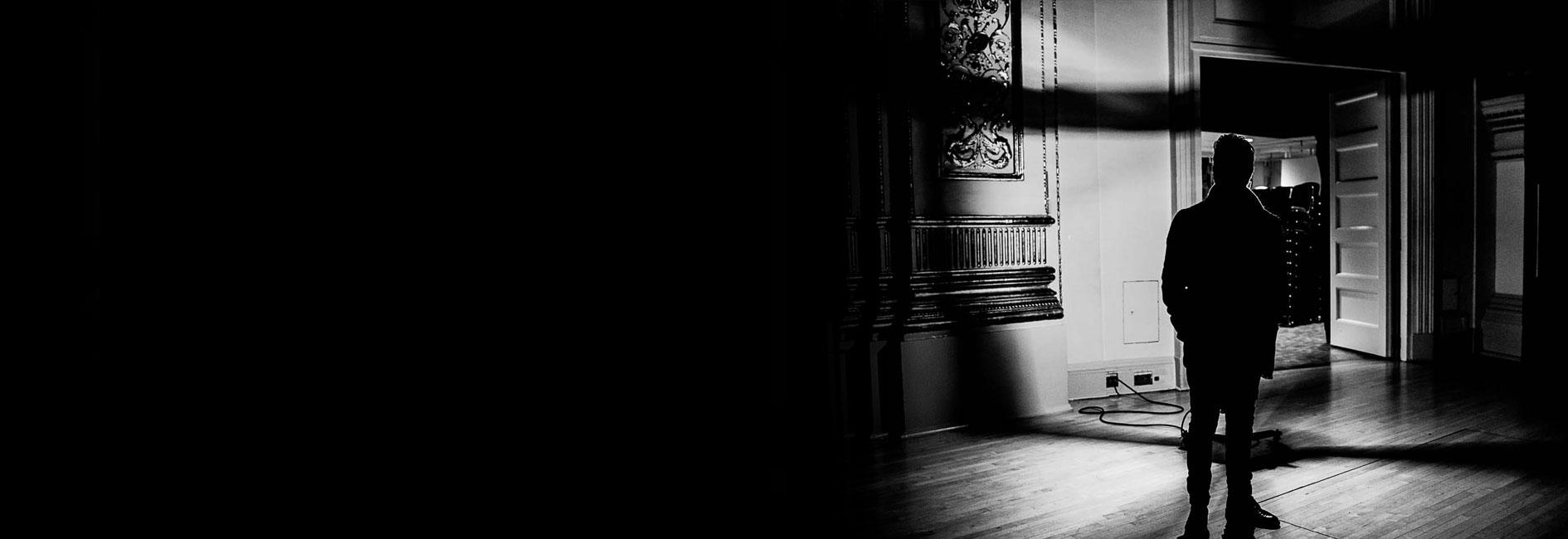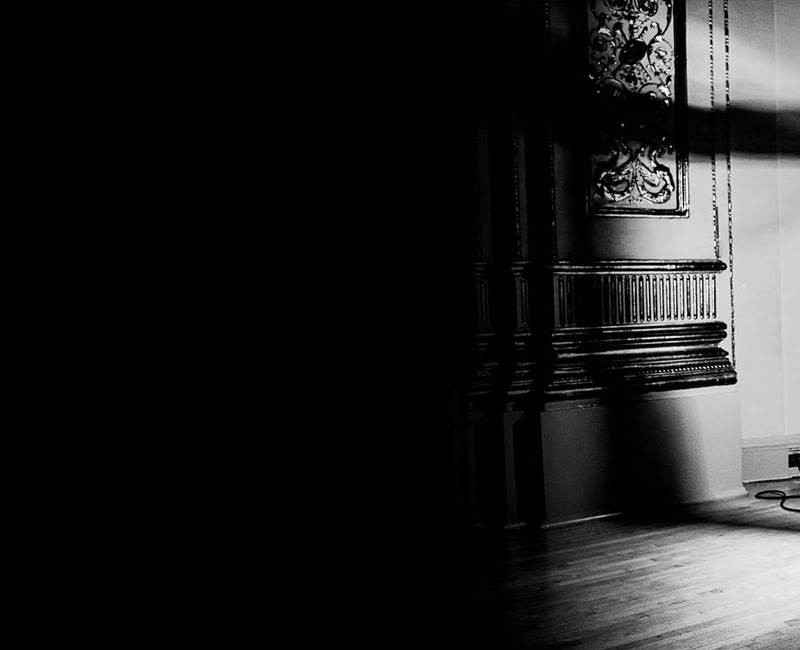
Festspielhaus Baden-Baden Press Reviews
06 Jun 2023
‘Raising expectations’ – Review by the Badische Neueste Nachrichten.
by Isabel Steppeler.
Bewitching “Parsifal” Finale with Pablo Heras-Casado at the end of the Pfingstfestspiele.
An exclamation mark at the end: The Pfingstfestspiele with the SWR Symphony Orchestra in Baden-Baden came to an end on Sunday with moving sounds. As at the opening, Richard Wagner’s work was the focus of the last concert: the prelude and the third act of his consecrated stage play “Parsifal” developed a beguiling effect in Pablo Heras-Casado’s sensual and analytical interpretation.
A promising outlook for this year’s Bayreuth Festival: It will open on 25 July 2023 with a new production of Parsifal under the musical direction of the Spanish conductor, who will be making his Bayreuth debut there. […]
Earlier, Franz Liszt’s Piano Concerto No. 2 in A major thrilled the audience with French pianist Alexandre Kantorow. His sensual playing is just the right approach for this composition, which begins surprisingly intimately. Wonderful horn and oboe solos could be experienced this evening. The work lives from the contrast of striking rhythms and playful melodies. Kantorow and the orchestra successfully ensnared each other. Here, too, Heras-Casados seduced with a lot of sensuality that never lost its ground. The evening was a dignified conclusion to the Pfingstfestspiele […].”
Bachtrack
By Christoph Wurzel
“[…] The ideal for Parsifal is a sound that “pairs clarity and fusion,” according to Pierre Boulez, who has conducted the opera several times in Bayreuth. Pablo Heras-Casado put it to the test at the Whitsun Festival on the podium of the Festspielhaus in Baden-Baden with the SWR Symphony Orchestra. Clarity, i.e. the presence of individual voices and fusion, i.e. a mixed sound as if behind a thin veil – this synthesis was superbly achieved by conductor and orchestra in this performance.
The prelude to the first movement began in exemplary beauty: finely mixed colors in the introductory Last Supper motif of clarinets, English horn, bassoon and strings. In general, the leitmotifs were not displayed like shields (as in the Ring), but symphonically embedded in the overall flow of the sound. This required the utmost concentration and discipline in the orchestra, and the result was excellent. Heras-Casado certainly celebrated the required solemnity, but it never turned into false pathos. Not even at the end of the third act, where he let the redemptive jubilation fade away in a wonderfully internalized piano after a brief forte upswing of the harps.
In general, dynamics and tempo seemed absolutely appropriate. Often a Parsifal conducting is judged by the duration required. In the case of the third act, the figures vary from 65 to almost 90 minutes. Heras-Casado was in the good middle range at about 75. The flow was not plodding, but not hurried either, but felt just right. For this music lives less from dynamic tension than from the subtle change of timbres and the art of fine shading by conductor and orchestra.
Most of the time the sound shone amber, but in the Good Friday Magic it brightened, became mellifluous in the woodwinds, soft in the horns and delicate in the strings. When Parsifal turned to Kundry, the sound darkened again chromatically; a change that succeeded most subtly and filigree. […]
The middle part of the program, the Second Piano Concerto by Franz Liszt, did not prove to be a disturbing factor at all, not so much because of the family connections between the two composers, but rather as a musical contrast. For here Heras-Casado completely changed style. Here the SWR Symphony Orchestra played with the highest degree of transparency, shaping the dramatic change of moods vividly and captivatingly. […]”
Full review.
The Spanish conductor Pablo Heras-Casado – Rheinische Post.
By Wolfram Goertz.
“Parsifal” is the work that has seen the greatest fluctuations in performance time at
Bayreuth. Pierre Boulez managed it in just over three and a half hours, Arturo Toscanini almost couldn’t get up from the kneeling bench and took more than an hour longer (surpassing even the supposedly extremely slow Hans Knappertsbusch). Heras- Casado is known for choosing unorthodox solutions. Of his Madrid “Ring” at the Teatro Real there, legates report that one always left the opera house well before midnight. He actually performed the “Ride of the Valkyries” as if a fuse were burning.
And his DVD of Wagner’s “Flying Dutchman” shows us an artist who is himself at home on all the world’s oceans. This can only be an advantage for Bayreuth on the Red Main.
ter in the garden of the Palazzo Rufolo the model for Klingsor’s magic garden. Now, a Spanish conductor is not automatically the ideal host for a pilgrimage to an Iberian-colored “Parsifal.” But Heras-Casado has also studied art history, he knows the elements of the Moorish, knows about stucco decoration and plant-like motifs – all this germinates and proliferates in Wagner’s music, after all, not only spurenelementary. That’s why Wagnerians will be paying attention this summer to how the Festspielhaus, used three-dimensionally by director Jay Scheib (with VR glasses), becomes a spatiotemporal Gesamtkunstwerk in music as well.
As a candidate for the Green Hanger, Heras-Casado also seems so important because he consistently pays attention to a lean sound (and likes to work with baroque orchestras like the Freiburgers). Earlier Bayreuth attempts with historically oriented performance practice seemed a bit half-baked, Matthias Hengelbrock at the “Tannhäuser” podium had no backing for the musicians. This should be different with Heras-Casado, who has conducted all over the world, in Boston and Cleveland, Berlin and Munich. In the coming season, he will conduct Ligeti’s “Le Grand Macabre” at the Vienna State Opera and Mozart’s “Così fan tutte” in Paris. At the moment, he does not hold a chief position, he can choose the engagements. However, he does have preferences, such as the SWR Symphony Orchestra in Stuttgart.
His sound is always free of militant traits. He does sharpen accents, but is more attached to the flowing, narrative. It is fitting that he does not use a baton. He models sound with his hands. His beautiful recording of the Schu- mann symphonies with the Munich Philharmonic recently benefited from this narrative-lyrical attitude, whereas his recording of the Beethoven symphonies with the Freiburg Baroque Orchestra seemed even more dexterous, more eloquent, more open to sparkling details.
Offenburger Tageblatt.
When Wagner’s “Parsifal” with the message “Redemption to the Redeemer” had faded away, there was a reverent silence in the not sold-out Festspielhaus Baden-Baden. Then there was much applause […]. One had heard the prelude and the third act at the end of the Whitsun Festival and was disappointed, not because of the musicians, but because of the sound of the music. It is the only work composed for the Bayreuth orchestra pit, for this mystical abyss. It cannot unfold its spiritual effect on a concert stage. No conductor succeeds in this, not even the Spaniard Pablo Heras-Casado, who took broad tempos and often covered up the singers. In Bayreuth, where he debuted this year with “Parsifal,” he will find other, also not easy, conditions. […]

